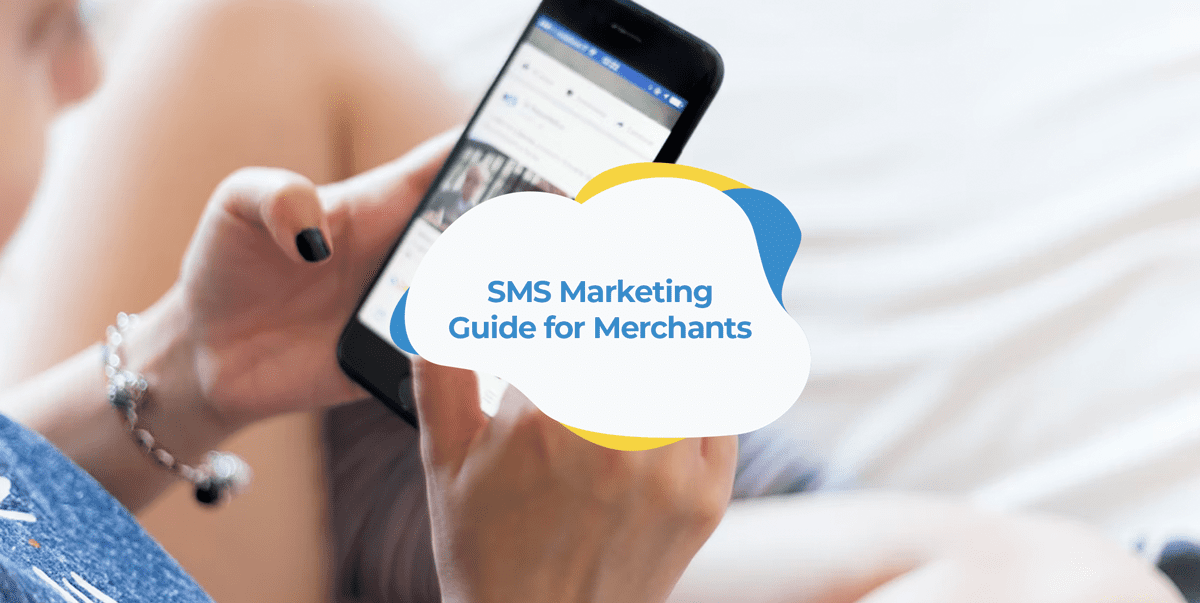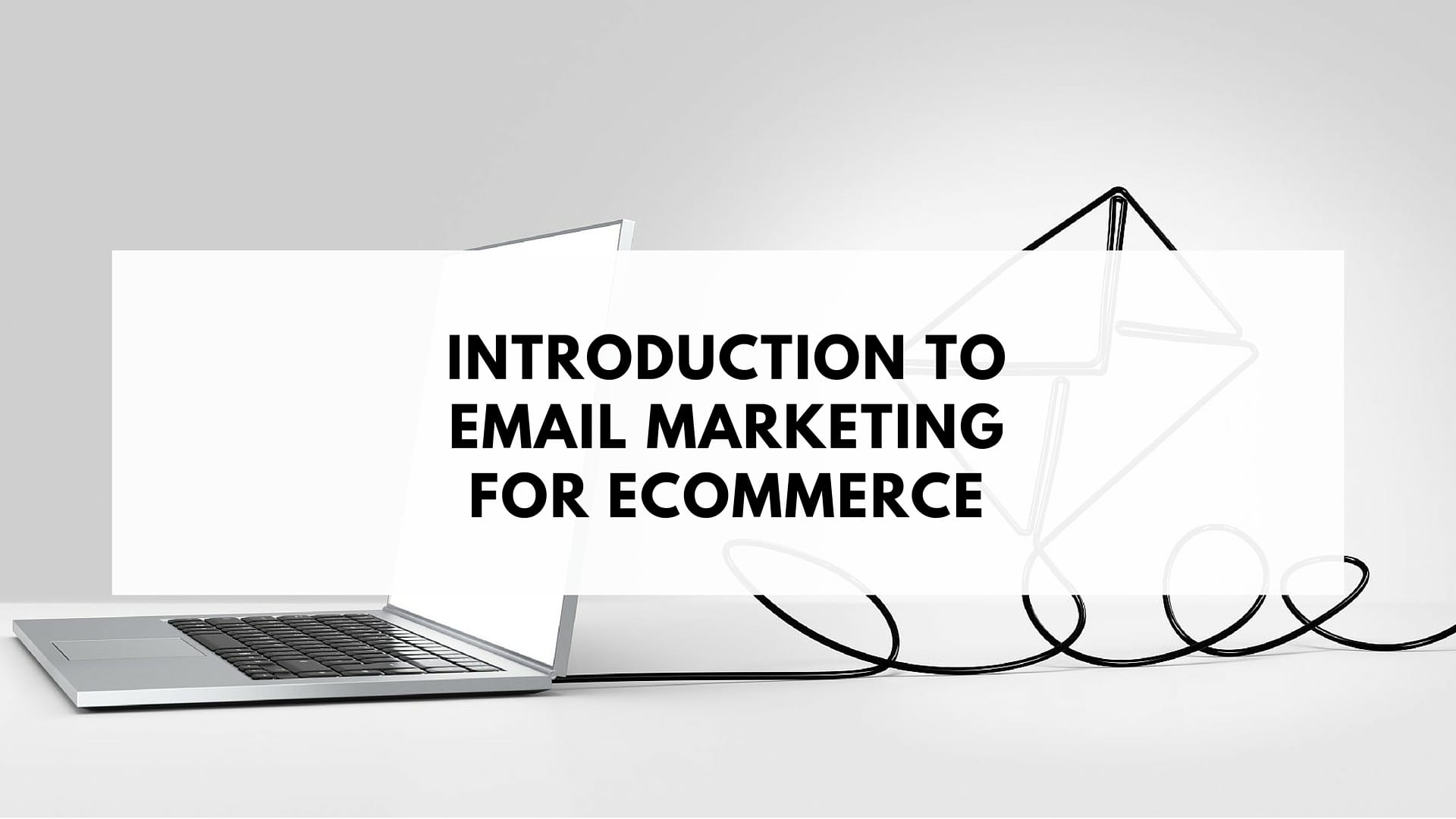Have you noticed that more and more brands have added SMS to their arsenal of digital marketing channels?
While SMS has been around since the early 90s, recently it has become an increasingly popular marketing tool for businesses. Especially for online merchants.
This popularity comes down to SMS’ unique ability to reach customers quickly and directly with short, important messages at a time when other channels like social media are saturated.
By being able to cut through the noise, SMS marketing can deliver incredibly impressive results.
For example, SMS enjoys an open rate of 98% (compared to roughly 20% for email) and more than 60% of customers read an SMS marketing campaign within 5 minutes.
So unlike other channels, you can be sure when you send an SMS campaign, your customers will receive your message loud and clear.
But it’s not all sunshine and rainbows.
As you may well know from personal experience, SMS also carries an increased risk of annoying your customers compared to other channels. So if you’re thinking about running some SMS campaigns, it’s important you know what you’re doing.
That’s why we’ve put together this comprehensive guide.
Below you’ll find everything you need to know about running a successful SMS marketing campaign from who you should target and when to how to structure your messages.
But first, let’s take a look at exactly what SMS marketing is.
What is SMS marketing?
To put it simply, SMS marketing (also known as text message marketing) is the sending of promotional and transactional text messages directly to the mobile phones of customers.
So in the same way that email marketing is simply the use of email to send marketing messages, SMS marketing is the use of text messages to send marketing messages.
Below is an example of this in action in the form of a Black Friday campaign from Emotiva.
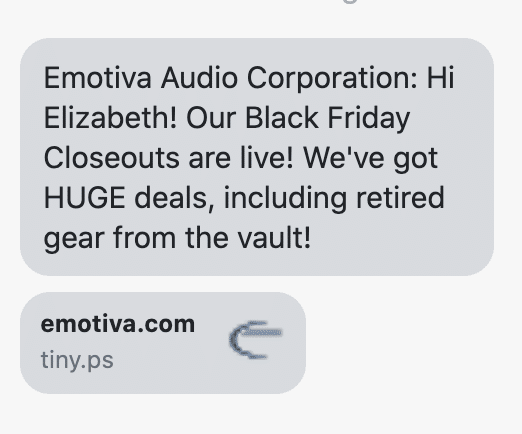
And just like with email marketing, SMS marketing is not a case of manually sending individual customers text messages but rather relies heavily on automations and mass texting.
So just as you can (and should) set up automated email campaigns such as when a customer makes a purchase or abandons a cart (for example), you can also set up automated SMS campaigns to send following particular events.
The same is true with mass text messages. You can send your customers the same SMS campaign in a similar way to how you can send an email newsletter to your entire email list.
That said, there are some key differences between email and SMS marketing that you should always keep in mind.
Differences between email and SMS marketing
As you might’ve noticed from the example above, one of the key differences between SMS and email is the size of the messages.
SMS messages are incredibly short and are usually limited to just 160 characters. That’s not much space to include important elements like your business name, message, call-to-action, and unsubscribe link.
This means you have to be very precise and clear about what message you want to send.
Another difference is cost. Sending SMS messages costs significantly more than sending the same number of emails.
The other big, and arguably more important, difference between SMS and email is the personal nature of the channel.
Just think about how you use email. Chances are you primarily use it for work, sending documents and keeping up to date with different brands and organizations.
Now think about how you use text messages. If you’re like most people, you’d use SMS primarily as a way to send personal messages with family and friends.
This makes SMS a much more personal and intimate means of communication than email.
The takeaway message from this is that customers have a lower tolerance for receiving multiple SMS messages from brands like your own than they have for emails. This means that SMS requires a lighter touch and you should be more selective about when you send an SMS campaign.
The last thing you want to do is harm the relationship with your customers by misusing SMS as a marketing channel.
The good news is that by following the SMS best practices listed below, you’ll avoid this from happening.
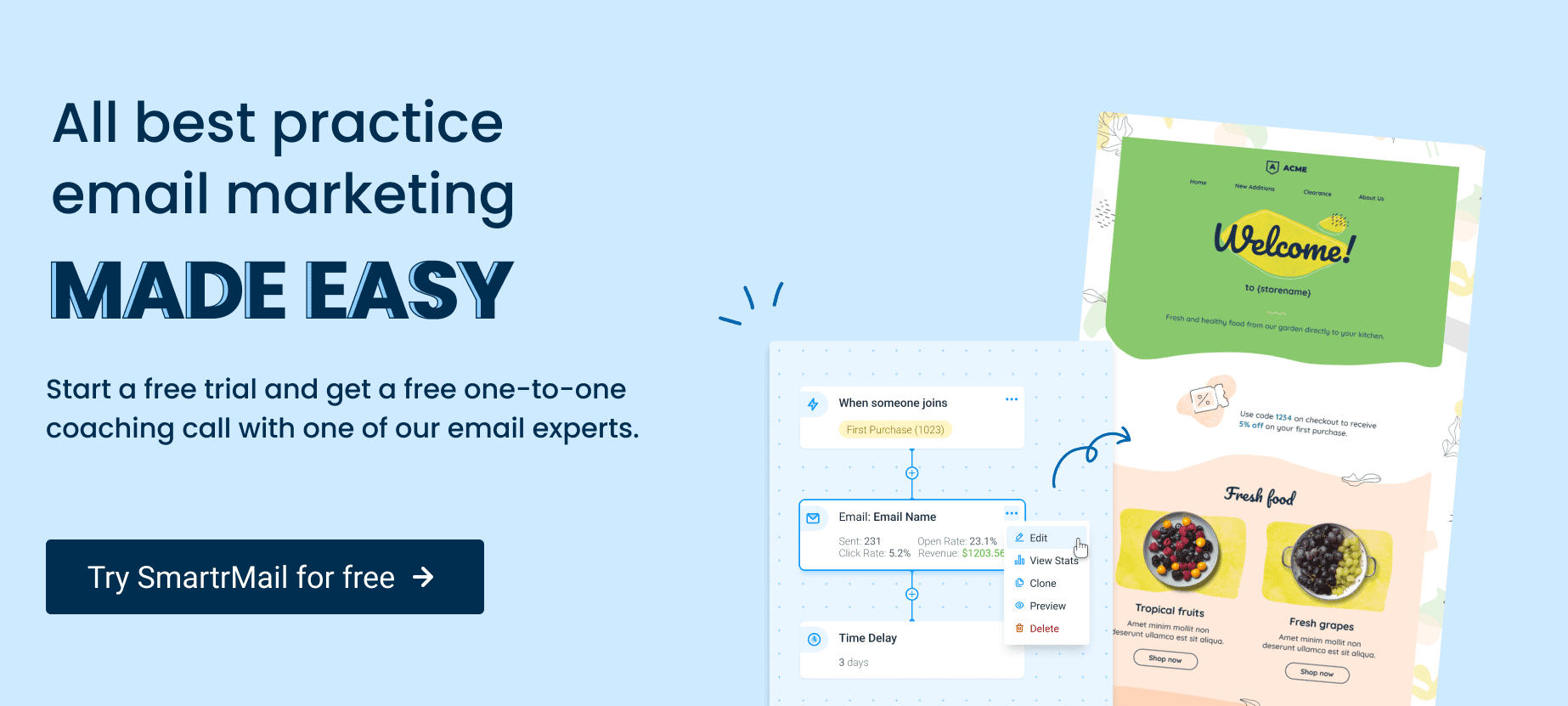
SMS marketing best practices
SMS is an incredibly powerful marketing tool.
This means that when it’s used well, it has the power to drastically increase your sales, customer engagement along with many other of your business objectives.
The reverse is also true though. If it’s misused, it has the potential to damage your customer relationships and end up costing you sales and business.
That’s why it’s important to keep the following best practices in mind.
Only send SMS campaigns if you have permission
This is an important one. Nobody wants to receive unsolicited marketing messages, especially not in such a personal form as with SMS.
So before you even send your first SMS campaign, be sure that you have the necessary permission from your customers.
While the exact legalities of this vary from country to country, a good place to start is to think of collecting SMS consent in the same way as collecting email consent.
This means it’s a good idea to update your signup forms to mention that you’ll be sending both email and SMS marketing messages. Just as in the example below.
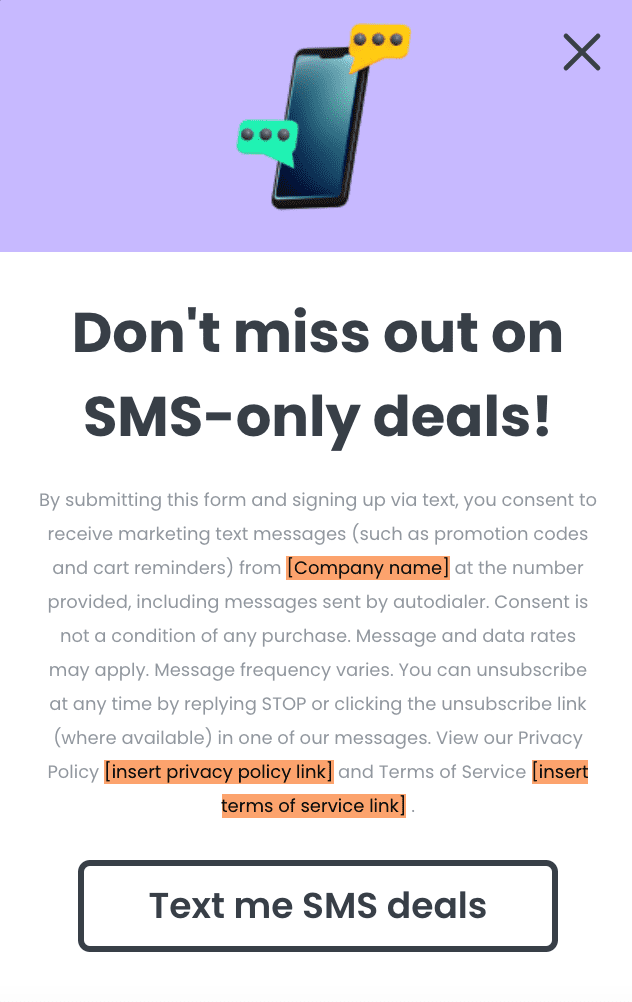
In most countries, just because someone signups for your email newsletter it does not mean they are also subscribed to your SMS communication. They need to explicitly subscribe to each one in your signup flow.
Honor unsubscribe requests
Just like with email marketing, it’s important to give your customers a way to opt-out of receiving your SMS campaigns.
And when a customer decides to opt-out, you should honor their request and no longer send them any more SMS campaigns.
Identify yourself
Context is everything when it comes to SMS marketing.
Imagine how you would react if you received a text message from an unknown number that tells you to click on a strange-looking link to save $10. If you’re like most people, you’d just ignore or delete the message.
To help prevent this from happening to your campaigns, it’s important to ensure that your customers know you’re the one sending the messages.
And the most basic and easiest way to do this is to include your brand’s name in the message.
Preferably at the start of the message like in the example below from Bones Coffee Company.
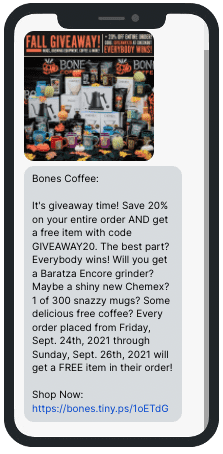
Optimize your SMS messages
Beyond including your brand’s name in the campaign, there are several other things you can include to optimize your SMS message to improve its performance.
Personalize your messages with your customer’s name
One of the most important things you can include in your campaign is your customer’s name.
This is the most basic form of campaign personalization which we know can drastically improve read rates and conversions.
Along with including your brand’s name, it also helps identify you as a legitimate sender and not a spammer.
Include a call-to-action
A call-to-action is simply what behavior or action you want your customer to do after receiving and reading your text message.
For example, in the campaign below the call-to-action is to “click the link below” where the customer will be able to purchase a Hardcore Bundle.
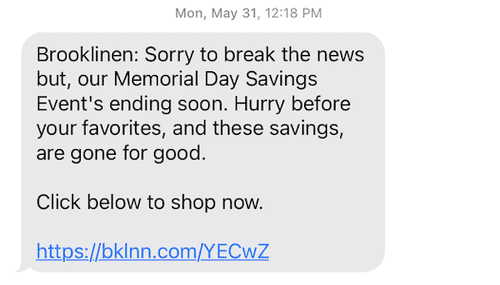
The last thing you want after your customers receive your SMS campaign is for them not to know what to do next.
The more clearly you can spell out how they can redeem your offer or take advantage of a sale, the greater your conversion rate will be and the more sales you’ll make.
Include an unsubscribe link
As previously mentioned, it’s important to only send SMS campaigns to customers who are interested in receiving them.
And just like with email marketing, some customers will naturally become disinterested over time and want to opt-out of receiving future campaigns.
That’s why it’s important to include a way for customers to unsubscribe from your SMS marketing in your campaigns. Just like in the example below.
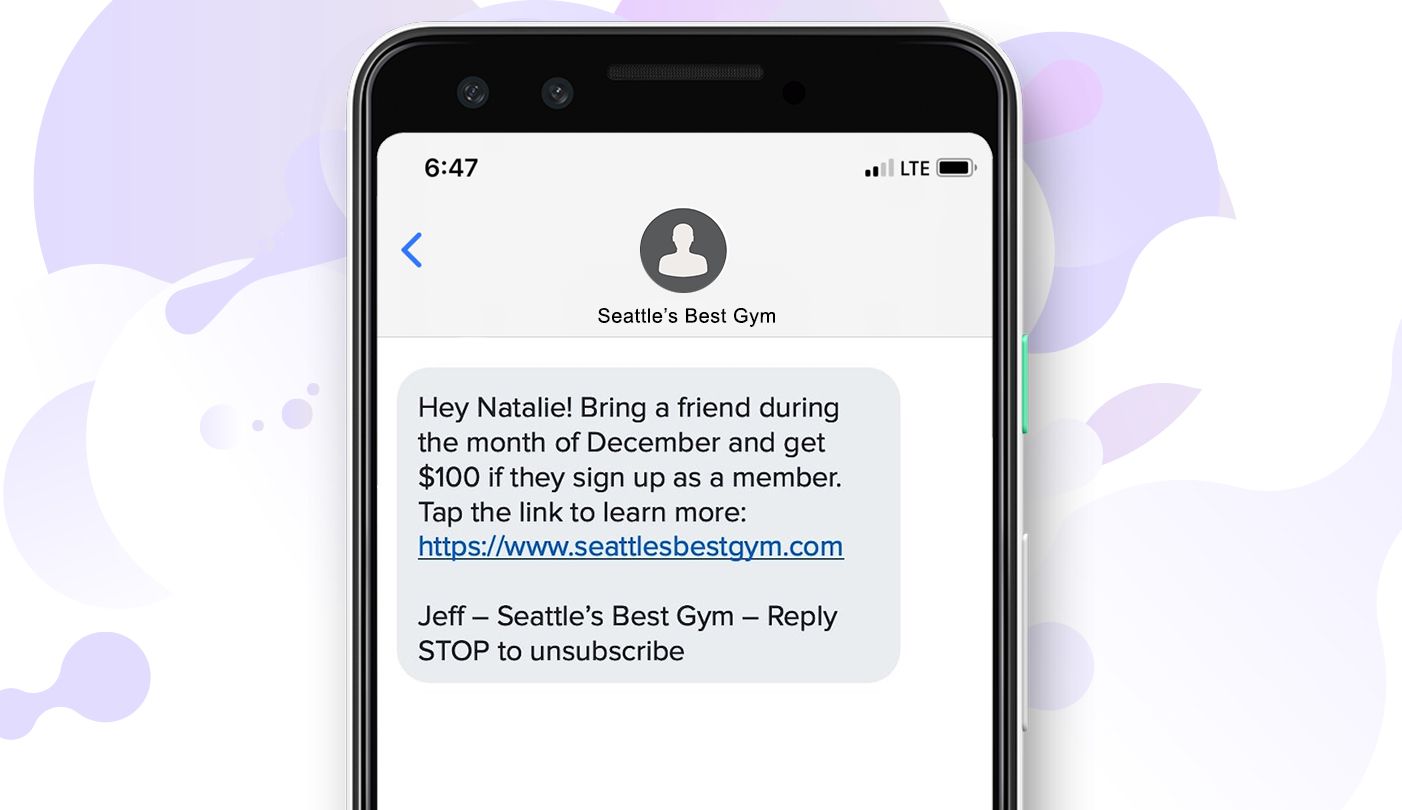
You’ll notice that in this example, the unsubscribe option is not actually a link.
Instead, for customers to unsubscribe all they have to do with reply STOP to the message. This is a more than acceptable alternative to an unsubscribe link as it still gives people an easy way to unsubscribe.
Send the right types of messages
Realizing more sales and positive results from your SMS marketing is not just about optimizing your messages. You need to be sending the right messages to begin with.
And it’s not just the right messages, but also targeting the right customers at the right time.
As with email, there are two ways to achieve this: with manual campaigns and with automations.
Bulk text messages
Manual SMS campaigns work in much the same way as email newsletters – you create your message and then send it to all the recipients at the same time.
This can be to either all your customers or a particular segment of them.
The thing to keep in mind, though, is that SMS and email are two different channels. And beyond SMS messages being short and sharp, your customers will grow tired of constant SMS updates very quickly.
So while you should be sending a regular email newsletter, we do not recommend sending regular SMS messages.
Instead, bulk SMS campaigns should be reserved for significant sale events (like Black Friday) and not sent every time you have a new item in stock or have a similar minor announcement.
That said, targeted manual SMS campaigns can work for less significant updates if the people receiving them are genuinely interested in the news.
An example of this would be if you’ve created a segment of customers interested in a particular product category (let’s say vintage vinyl records). If a shipment of particularly interesting vintage vinyl records arrives, then you might want to consider letting these customers know through an SMS campaign.
SMS automations
Just like with email marketing, the true power of SMS marketing lies in its ability to be largely automated.
And by setting up the right automations, you’ll be able to easily send the right message to the right customer at the right time.
But as with manual campaigns, you don’t want to set up as many SMS automations as you do email automations.
You should reserve SMS automations for when your customer displays high purchase intent or when it’s really worthwhile automating an SMS campaign.
For example, while a welcome series is an absolutely essential email automation, you don’t necessarily need to have an additional welcome SMS message.
Whereas an automation targeting customers who are right at the purchase threshold, such as abandoned cart campaigns, can be served well by SMS automations. Just like in the example below from Brooklinen.
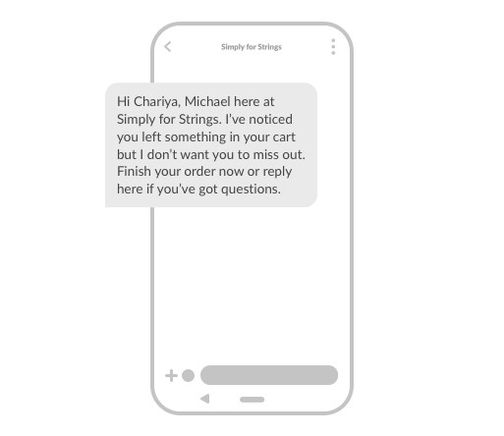
At the other end of the customer lifecycle, it can also be useful to send previous customers who are no longer purchasing from your store or engaging with emails a win-back SMS campaign.
So, in general, we recommend keeping your SMS automation to the following campaigns:
- Abandoned carts
- Browse abandonment
- Win-back
Don’t send too many SMS messages
Just to reiterate, in case it’s not already clear, you should not spam your customers with too many SMS messages.
Unlike the optimal email frequency, most customers do not want to receive as many text messages as they do emails.
So there’s no need to send a weekly SMS newsletter or regular sale campaigns.
And by reserving SMS for significant announcements or sale events, your campaigns will have more impact when you send them.
Sign-up to our newsletter and receive a free eBook with hidden Email Marketing Tips
Reconsider using any SMS slang
SMS slang comes from the days of old mobile keypads that were designed for numbers instead of text. To help speed up sending messages, abbreviations such as OTW, NVM, TTYL, LOL, etc. were commonly used.
Considering that your SMS messages are limited to 160 characters, you might be tempted to use some of this SMS slang to save space.
But unless your brand is one of the very few that has a very youthful or trendy vibe that can put this off, do not give in to the temptation to use SMS slang.
At best, you will come across as unprofessional and lacking in credibility. At worst, your customers may not understand what the abbreviations mean and will just be confused by your message.
Conclusion
With SMS being able to reach customers incredibly quickly and directly, it’s no wonder that it’s an increasingly popular digital marketing channel.
It’s also not surprising that plenty of online merchants have already found success with running SMS campaigns.
By following the above best practices, you’ll also be able to find success with SMS marketing.
Just remember that SMS requires a slightly different approach with a lighter touch than with your email marketing.
If you keep that in mind and think carefully about what kind of messages your customers will want to receive, you’ll avoid the potential pitfalls and instead be well on your way to success.

